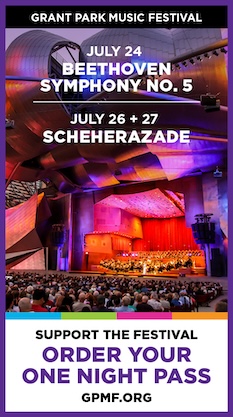Bezuidenhout offers a revelatory fortepiano program at the Logan Center

The fortepiano, immediate parent of the modern piano is not an instrument noted for dynamism or emotive power. Under the fleet fingers of an artist of the caliber of the South African-born keyboardist Kristian Bezuidenhout, however, this reputation will need to be revised permanently.
Bringing the instrument front and center to Hyde Park’s Logan Center for the Arts Friday night. Bezuidenhout’s recital for the University of Chicago Presents series proved revelatory. The small, almost toy-like wooden object dominated by the tall figure of the young musician gave out passionate and dramatic renderings that were totally unexpected and quite gripping in music generally thought of as merely formal and elegant with little opportunity for contrast or drama.
The program was a well-planned collection with a focus on Mozart’s music, and the renderings were close to flawless, revealing how this composer pushed the envelope of conventionality with an instrument that was capable of expressive expansion not available on the soon-to-be- extinct harpsichord.
Two pieces by C.P.E. Bach set the bar technically. His Sonata in E Minor, “Kenner und Liebhaber” is a didactic piece for “connoisseurs and amateurs” which provides a variety of challenges and mood changes for the performer, as does the short but concise Rondo in C minor. Both can be seen as quarries for Mozart’s move toward the Romantic style which harnesses the technical with the emotional into the integrated masterpieces which were the highlights of the program.
The Mozart Suite in C Major, K. 399, is a lesser-known collection of baroque-style experiments by the composer. Here Mozart unleashed his originality onto these virtuosic miniatures which exploit the highly contrasting sonorities of the keyboard’s three divisions—revealing particularly the lower register’s gruff power in contrast to the upper register’s sweetness. The final Sarabande was played in a completion by Robert Levin.
Two shorter Mozart keyboard works were the familiar Menuet, K. 355, with its timeless chromatic beauty and the Gigue K. 574, an homage to Bach, both of which pieces were subtly changed by the blunt sound of the instrument which in the artist’s hands spoke rather than sang the themes.
In all of this music Bezuidenhout provided stylish, impulsive and sensitive performances that served the music and the instrument well and were key to the more familiar Mozartian terrain of the Rondo in A Minor, K. 511. The music emerged as austere and unfussy, the lyricism more discreet than flowing and the performance for the most part sure-fingered and satisfying.
The second half of the evening consisted of two larger Mozart pieces, giving the artist and his instrument a real chance to prove their case.
The performance of the Fantasia, K. 475, was the highlight of the evening and brought out the inherent drama of the work providing many opportunities to revel in the keyboardist’s dexterity. This is the ideal work to show off the proto-romanticism of Mozart and the power of the little instrument when presented with emotional and technical challenges.
The last work on the program was the Sonata, K. 333, a well-known piece that is impulsive and melodic with many graceful features along the way, once again creating a subtly different space on this instrument and winding up a well-conveyed narrative in the finale with buoyant energy and good humor.
Posted in Performances
